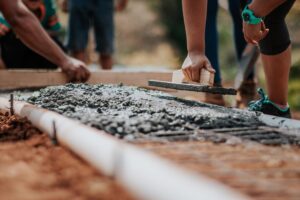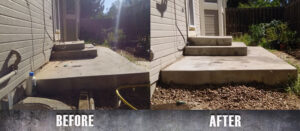Denver’s climate and soil conditions can take a toll on concrete surfaces, leading to sinking, settling, and unevenness. Sunken concrete not only poses safety hazards but also detracts from the aesthetic appeal of your property. Fortunately, mudjacking offers a cost-effective and efficient solution to address these issues.

In this article, we will explore mudjacking in Denver, its process, its benefits, and why it is a popular choice for restoring stability to sunken concrete.
Understanding Mudjacking:
Mudjacking, also known as slabjacking or concrete leveling, is a technique used to raise and level sunken concrete surfaces. It is a non-invasive alternative to concrete replacement and involves injecting a specialized mixture, commonly referred to as a “slurry,” beneath the sunken concrete. This slurry fills voids, raises the concrete, and restores its levelness.
The Mudjacking Process:
- Assessment: A professional mudjacking contractor begins by assessing the extent of the concrete settlement. They will inspect the affected areas, identify the underlying causes of the sinking, and determine the feasibility of mudjacking as a solution.
- Preparation: The contractor prepares the work area by cleaning the surface and removing any obstacles that may hinder the mudjacking process. They also identify the appropriate access points for injecting the slurry.
- Drilling Holes: Strategic holes, typically around 1 to 2 inches in diameter, are drilled into the sunken concrete. These holes serve as entry points for the slurry and allow for precise leveling of the concrete slab.
- Slurry Injection: Using specialized equipment, the mudjacking contractor pumps the slurry mixture through the drilled holes into the voids beneath the sunken concrete. The slurry consists of a combination of cement, soil, water, and additives, which create a stable and durable lifting agent.
- Raising and Leveling: As the slurry is injected, it fills the voids and exerts pressure on the sunken concrete, gradually lifting it back to its original position. The contractor carefully monitors the process to ensure even lifting and proper alignment.
- Hole Patching and Cleanup: Once the concrete has been raised and leveled, the drilled holes are patched with a compatible material, such as cement or epoxy, to restore a seamless surface. Any excess slurry is cleaned up, leaving behind a smooth and stable concrete slab.
Benefits of Mudjacking in Denver:
- Cost-Effective: Mudjacking is a cost-effective alternative to concrete replacement. It eliminates the need for extensive demolition and the installation of new concrete, resulting in significant cost savings for property owners.
- Time-Efficient: Mudjacking requires minimal downtime compared to concrete replacement. After the process is complete, the concrete can typically be used within a short period, minimizing disruption to your daily activities or business operations.
- Enhanced Stability and Safety: Sunken or uneven concrete surfaces pose tripping hazards and can affect the structural integrity of your property. Mudjacking restores stability, eliminating safety risks and providing peace of mind.
- Aesthetically Pleasing Results: Sinking concrete not only compromises safety but also detracts from the visual appeal of your property. Mudjacking restores the level of the concrete, improving its overall appearance and curb appeal.
- Environmentally Friendly: Mudjacking promotes sustainability by reducing the need for concrete replacement, which requires additional raw materials. By choosing mudjacking, you contribute to environmental conservation efforts by minimizing waste and resource consumption.

When considering mudjacking for your concrete surfaces in Denver, it is crucial to select a reputable and experienced contractor.
Learn more at Wiki as well.